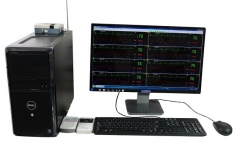Wechat QR code

TEL:400-654-1200

TEL:400-654-1200

Which non - alcoholic fatty liver disease patients should be liver biopsy?
Nonalcoholic fatty liver disease (NAFLD) is currently the most common chronic liver disease and the second most common cause of liver transplantation. NAFLD is thought to be a manifestation of systemic insulin resistance and metabolic syndrome in the liver. Liver imaging or liver biopsy revealed 5% or more hepatic fat accumulation. If steatohepatitis or fibrosis is suspected, patients should have a liver biopsy to guide management and prognosis.EEG machine
NAFLD and NASH
NAFLD is classified into two subtypes: non-alcoholic fatty liver disease (NAFL) and non-alcoholic steatohepatitis (NASH). Both NAFL and NASH present with steatosis (at least 5% of hepatocytes). In addition, NASH also presents with lobular and portal venous inflammation and liver damage with balloonlike hepatocyte degeneration, which can progress to cirrhosis and liver cancer (HCC).
Clinically, it is important to distinguish NASH subtypes because most NAFLD patients have steatosis without necrotizing inflammation or fibrosis and do not require medication.EEG machine

Clinical significance of NAFLD
NAFL has a good prognosis in terms of liver histological progression, while NASH may progress to fibrosis histologically, and as many as 15% of patients may develop cirrhosis.
Progression of fibrosis is a secondary risk for portal hypertension complications (ascites, variceal hemorrhage, and hepatic encephalopathy), end-stage liver disease, and complications associated with hepatocellular carcinoma. In western countries, NAFLD causes between 4% and 22% of hepatocellular carcinoma.
In a 2015 meta-analysis, NAFL patients with stage 0 fibrosis developed into stage 1 fibrosis at 14.3 years, while NASH patients with stage 0 fibrosis developed rapidly and developed into stage 1 fibrosis at 7.1 years. A systematic review of NASH patients assessed age and initial liver biopsy inflammation as independent predictors of progression to advanced fibrosis.